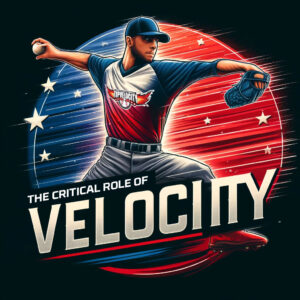 Welcome to another engaging exploration into the Critical Role of Velocity in Pitching, where we zero in on one of the most debated aspects of the game: velocity. This component is not just another statistic; it is a fundamental element that significantly influences outcomes at all levels of baseball. By dissecting the role of velocity, we aim to provide a clearer understanding of why it's so critical and how it interacts with other key pitching mechanics to boost a pitcher's overall performance.
Welcome to another engaging exploration into the Critical Role of Velocity in Pitching, where we zero in on one of the most debated aspects of the game: velocity. This component is not just another statistic; it is a fundamental element that significantly influences outcomes at all levels of baseball. By dissecting the role of velocity, we aim to provide a clearer understanding of why it's so critical and how it interacts with other key pitching mechanics to boost a pitcher's overall performance.
Velocity's impact extends beyond mere numbers. It shapes game strategies, dictates pitcher-hitter matchups, and often determines the success of both defensive plays and offensive responses. Our discussion today seeks to uncover the underlying factors that make velocity a crucial aspect of the sport. We'll explore how it enhances other pitching skills, such as accuracy and spin, and why mastering it can lead to a more dominant presence on the mound. Join us as we delve into this vital topic, aiming to demystify the mechanics behind velocity and its pivotal role in the art of pitching.
Understanding The Critical Role of Velocity in Pitching
In baseball, velocity is a critical measure of how fast a pitcher can deliver the ball from the mound to the plate. It transcends being merely a statistic displayed on the radar gun; it embodies the synthesis of a pitcher's physical strength, refined technique, and tactical execution. High velocity is not just about overpowering the hitter; it significantly changes the dynamic between the pitcher and the hitter.
The increased speed of a pitch reduces the time hitters have to recognize the pitch type, decide whether to swing, and then execute that decision. This compressed reaction time forces hitters to rely more on instinct than strategy, often leading to less precise swings and increased strikeouts or poorly hit balls. Moreover, a pitcher with a reputation for high velocity can psychologically intimidate hitters, affecting their confidence and approach even before stepping into the batter's box.
Thus, velocity serves as a fundamental pillar in the architecture of a pitcher's game plan. It enhances the effectiveness of other pitches in the arsenal, like changeups and sliders, by setting a faster baseline that those pitches can deviate from, thereby increasing their deceiving power. Understanding and harnessing velocity is essential for pitchers aiming to elevate their game and dominate the opposition.
The Evolution of Pitching: The Critical Role of Velocity in Pitching
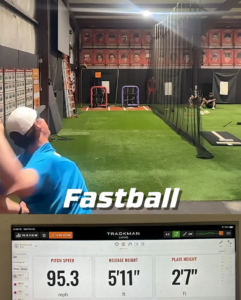 The role of pitching in baseball has undergone significant transformations over the decades, particularly in how pitchers use velocity as a strategic tool. In the past, the quintessential pitcher was expected to possess stamina and durability, qualities essential for completing entire games. This required a pitcher to manage their energy and pitch selection meticulously to maintain effectiveness over many innings.
The role of pitching in baseball has undergone significant transformations over the decades, particularly in how pitchers use velocity as a strategic tool. In the past, the quintessential pitcher was expected to possess stamina and durability, qualities essential for completing entire games. This required a pitcher to manage their energy and pitch selection meticulously to maintain effectiveness over many innings.
However, the modern era of baseball has seen a strategic pivot. The focus has shifted from endurance to peak performance in shorter stints. Today, starting pitchers often target the efficiency of high-velocity pitches in the initial innings rather than pacing themselves for the long haul. After this initial burst, the strategy transitions to a bullpen where relievers and closers specialize in high-intensity, short-duration appearances that leverage maximum velocity.
This evolution in pitching roles underscores the increasing importance of velocity in the sport. Teams now value pitchers who can deliver pitches at higher speeds, even if only for a limited number of innings or batters. This approach not only maximizes the effectiveness of pitches but also adapts to the changing dynamics of hitter strategies, which increasingly favor power and speed.
As a result, the ability to throw quick, difficult pitches that interfere with the hitter's timing and decision-making heavily influences modern pitching strategy. This strategic emphasis on velocity not only reflects changes in player roles and expectations but also signifies a broader shift in baseball tactics, where power and speed reign supreme on both sides of the plate.
Biomechanical Insights: The Critical Role of Velocity in Pitching
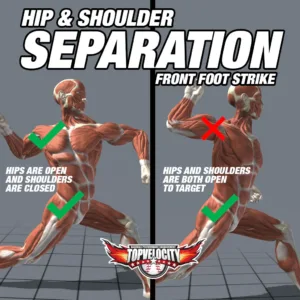 Biomechanics plays a foundational role in the realm of pitching, particularly when it comes to achieving and sustaining high velocities. Recent research in sports science has illuminated how specific biomechanical elements can drastically influence a pitcher's performance. Key components such as forward trunk tilt and lead knee extension are not merely technical terms but pivotal factors in enhancing pitch speed.
Biomechanics plays a foundational role in the realm of pitching, particularly when it comes to achieving and sustaining high velocities. Recent research in sports science has illuminated how specific biomechanical elements can drastically influence a pitcher's performance. Key components such as forward trunk tilt and lead knee extension are not merely technical terms but pivotal factors in enhancing pitch speed.
Forward trunk tilt, the angle at which a pitcher leans forward during a pitch, is critical for generating momentum and directing energy toward the plate. This tilt helps in transferring the force generated from the lower body through the trunk and into the arm, culminating in a faster pitch. By optimizing the angle of forward trunk tilt, pitchers can effectively increase the velocity of their throws while maintaining a smooth, coordinated motion that integrates the entire body.
Lead knee extension, on the other hand, refers to the straightening of the knee at the front leg during the pitch delivery. This extension stabilizes the pitcher's posture and provides a firm base from which force can be transferred up the body. When performed correctly, lead knee extension contributes to a more explosive and powerful pitching motion, thereby increasing the speed of the ball as it is released.
These biomechanical strategies do more than just elevate pitch speed; they also enhance a pitcher's command over the ball. By refining their mechanics, pitchers can achieve more consistent and accurate throws. Furthermore, proper biomechanical execution helps in minimizing the physical strain on the body, particularly on the arm and shoulder, thus reducing the risk of injuries commonly associated with high-velocity pitching.
Understanding and applying these biomechanical insights allow pitchers to unlock a higher level of performance. By focusing on the intricate details of their pitching mechanics, they can not only throw faster but also pitch smarter, preserving their health and extending their careers in the competitive landscape of baseball.
The Interconnectedness of Pitching Mechanics: The Critical Role of Velocity in Pitching
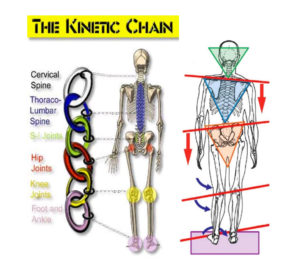 The concept of velocity in pitching is intricately linked to a network of biomechanical processes known as the kinetic chain. This chain represents a series of interconnected segments in the body, each influencing the next, culminating in the delivery of a pitch. By understanding and optimizing each link in this chain—from foot placement on the mound to the separation between the hips and shoulders—pitchers can maximize their throwing velocity while enhancing overall performance and reducing the risk of injury.
The concept of velocity in pitching is intricately linked to a network of biomechanical processes known as the kinetic chain. This chain represents a series of interconnected segments in the body, each influencing the next, culminating in the delivery of a pitch. By understanding and optimizing each link in this chain—from foot placement on the mound to the separation between the hips and shoulders—pitchers can maximize their throwing velocity while enhancing overall performance and reducing the risk of injury.
Foot placement is foundational; it affects the stability and alignment of the entire body during a pitch. Proper placement ensures that the energy generated from the ground up is efficiently transferred through the body. When a pitcher’s foot lands in the correct position, it sets up the rest of the body for optimal energy transfer, leading to more powerful and controlled pitches.
The role of the hips and shoulders, and their separation, is also critical in this biomechanical sequence. Hip-shoulder separation occurs when the pitcher’s hips begin to rotate towards the plate while the shoulders remain aligned towards home plate for a fraction of a second longer. This separation creates a stretch across the torso, building up elastic energy. When the shoulders finally rotate towards home plate, this stored energy is released, adding extra force to the pitch, thus increasing its velocity.
Furthermore, the synchronization of these movements within the kinetic chain not only boosts performance but also distributes the physical stress of pitching more evenly across the body. This distribution helps minimize the concentration of stress on any single body part, particularly the arm and shoulder, thereby reducing the likelihood of overuse injuries. Pitchers who master the complexities of the kinetic chain not only throw faster but do so more consistently and with less risk to their physical health.
In essence, velocity is not simply about how hard a pitcher can throw, but rather how well they can integrate and coordinate each segment of their body according to the principles of the kinetic chain. This interconnectedness of pitching mechanics ensures that velocity is a holistic expression of skill, strength, and biomechanical efficiency.
Velocity and Its Psychological Impact on Hitters: The Critical Role of Velocity in Pitching
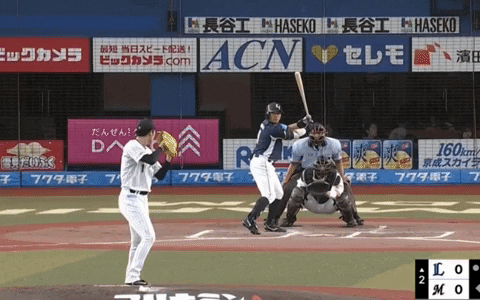
The psychological impact of velocity on hitters is a critical and often underappreciated aspect of baseball. When a pitcher delivers a fast pitch, it dramatically shortens the time a hitter has to see, process, and react to the ball. This accelerated timeline forces hitters to make split-second decisions, significantly increasing the cognitive load and stress they experience during their at-bat.
Fast pitches can induce a psychological effect known as "decision anxiety" among hitters. The fear of not reacting in time or making the wrong decision about whether to swing can disrupt a hitter's usual rhythm and strategy at the plate. This anxiety is not just about missing the ball; it's about the embarrassment of a strikeout or the failure to contribute to the team's efforts at a crucial juncture in the game.
Moreover, pitchers who are known for their high velocity can instill a sense of intimidation and apprehension in hitters even before the game begins. Hitters may overthink their approach, second-guess their techniques, or alter their stance and swing prematurely, all of which can diminish their natural ability to hit effectively. The mere presence of a high-velocity pitcher on the mound can alter the psychological landscape of the game, giving the pitcher an upper hand.
Hitters may tens up, shorten their swings, or swing too early in an effort to make up for the slower reaction time as a result of the psychological pressure high velocity places on them. These modifications can detract from their usual performance levels, leading to less effective hitting.
Understanding and exploiting the psychological impact of velocity, therefore, is a powerful strategy for pitchers. By mastering not just the speed but also the timing and variation of their pitches, pitchers can dominate the game not only through physical skill but also by playing a mental game that challenges the hitter's psyche and decision-making capabilities.
The Role of Technology in Understanding Velocity: The Critical Role of Velocity in Pitching
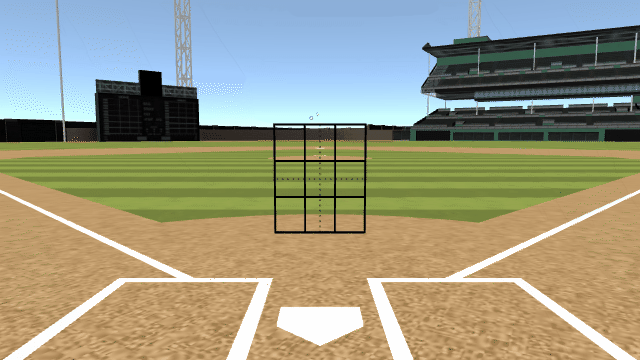
The integration of technology in baseball, particularly in the study of pitching mechanics, has revolutionized how coaches and players understand and improve velocity. Advanced tools such as high-speed cameras and motion sensors have become indispensable in dissecting the complexities of a pitcher's form and delivery. These technologies capture data at a level of detail that the human eye simply cannot perceive, providing a granular look at every aspect of a pitch, from the initial wind-up to the moment the ball leaves the hand.
High-speed cameras, for example, record pitchers in action at thousands of frames per second, allowing analysts to slow down the footage and examine the subtlest movements in a pitcher’s mechanics. This capability is crucial for identifying minor inefficiencies or errors that could be sapping velocity or increasing the risk of injury. It also allows for a precise understanding of how different body parts coordinate to produce speed, offering tailored feedback to help pitchers optimize each motion for maximum impact.
Similarly, motion sensors, often attached directly to a pitcher’s body or embedded within the mound, provide real-time quantitative data on everything from limb speed and angle to torque and force exertion. This data is not only valuable for improving performance but also for monitoring fatigue and managing workload to prevent overuse injuries. By analyzing trends over time, coaches can adjust training regimens based on objective metrics, ensuring that pitchers maintain peak performance without compromising their health.
Furthermore, technology facilitates a more scientific approach to training. With data analytics, teams can create highly personalized pitching programs. By correlating specific biomechanical movements with velocity outputs, coaches can devise training plans that focus on enhancing those key movements, thus directly boosting a pitcher's velocity.
The role of technology in understanding and enhancing velocity extends beyond individual performance improvement. It also contributes to the strategic aspects of the game, such as scouting and game-day decisions, by providing detailed profiles on pitchers’ strengths and weaknesses. This technological edge is transforming how teams prepare for opponents, strategize in-game, and develop their players over the long term.
In summary, the advent of sophisticated sports technology has provided the tools needed to turn the art of pitching into a more exact science. As technology continues to advance, its role in understanding and enhancing velocity will undoubtedly grow, further pushing the boundaries of what athletes can achieve on the baseball field.
Training Programs to Enhance Velocity
The 3X Pitching Velocity Program and the 2X Velocity Program, developed by TopVelocity, are specialized training regimens designed to significantly enhance pitching and throwing velocities for pitchers and position players, respectively. These programs leverage advanced training methodologies and biomechanical insights to help athletes achieve peak performance levels.
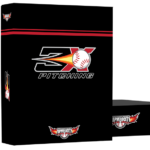 3X Pitching Velocity Program for Pitchers The 3X Pitching Velocity Program is a comprehensive system aimed at pitchers who wish to increase their throwing speed and improve their overall pitching mechanics. The program emphasizes a multi-faceted approach that includes:
3X Pitching Velocity Program for Pitchers The 3X Pitching Velocity Program is a comprehensive system aimed at pitchers who wish to increase their throwing speed and improve their overall pitching mechanics. The program emphasizes a multi-faceted approach that includes:
- Strength Training: Focused on developing the specific muscles crucial for pitching, this segment incorporates Olympic lifts and other compound exercises that enhance lower body strength and power, which are essential for generating velocity.
- Plyometrics: Designed to increase explosiveness, the plyometric drills in the 3X Program help pitchers develop faster and more powerful movements. These exercises improve the rapid force production capabilities of a pitcher’s legs and core, crucial for a dynamic pitching delivery.
- Mechanical Training: Through detailed video analysis and biomechanical feedback, pitchers refine their techniques to ensure efficient movement patterns that are critical for high-velocity throws. The program also teaches pitchers how to properly align their body mechanics to maximize velocity while minimizing the risk of injury.
- Mobility and Flexibility: The program includes a routine to enhance joint mobility and muscle flexibility, which are vital for achieving the full range of motion required in the pitching motion, thus allowing for greater speed and power during the pitch.
 2X Velocity Program for Position Players The 2X Velocity Program targets position players, focusing on improving their overall athletic performance and throwing velocity. Key components of this program include:
2X Velocity Program for Position Players The 2X Velocity Program targets position players, focusing on improving their overall athletic performance and throwing velocity. Key components of this program include:
- Functional Strength Training: Tailored to the needs of position players, this training component enhances the strength and power of muscles involved in throwing and batting. The exercises focus on full-body workouts that stimulate baseball-specific movements.
- Speed and Agility Drills: Critical for position players, these drills enhance quickness and reactive power, which contribute to faster sprints and more explosive throws.
- Throwing Mechanics: The program addresses the specific mechanical needs of position players, teaching them how to optimize their throwing techniques for increased velocity and accuracy.
- Mobility and Flexibility: The program includes a routine to enhance joint mobility and muscle flexibility, which are vital for achieving the full range of motion required in the pitching motion, thus allowing for greater speed and power during the pitch.
Both the 3X Pitching Velocity Program and the 2X Velocity Program are structured to be comprehensive and are based on cutting-edge research in sports science and biomechanics. Athletes enrolled in these programs receive personalized coaching and access to resources that guide them through each phase of their training, ensuring that they not only reach but also sustain their peak performance levels. These programs are ideal for athletes committed to advancing their skills and achieving new heights in their baseball careers.
Debunking Myths: Velocity vs. Control: The Critical Role of Velocity in Pitching
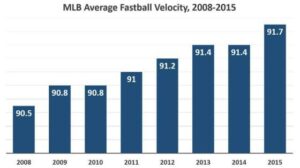 The debate over velocity versus control in pitching is longstanding, with many in the baseball community believing that a focus on increasing pitch speed necessarily sacrifices accuracy and control. However, this belief is largely a myth; current research and advanced training techniques show that it is entirely possible for pitchers to develop high velocity while also maintaining, or even improving, their pitching control.
The debate over velocity versus control in pitching is longstanding, with many in the baseball community believing that a focus on increasing pitch speed necessarily sacrifices accuracy and control. However, this belief is largely a myth; current research and advanced training techniques show that it is entirely possible for pitchers to develop high velocity while also maintaining, or even improving, their pitching control.
Understanding the Relationship Between Velocity and Control
Velocity and control are not mutually exclusive; instead, they can complement each other when developed through proper training. The key lies in how the training is structured and implemented:
- Mechanical Efficiency: Control is primarily a product of consistent, efficient pitching mechanics. When pitchers work on increasing their velocity through biomechanical improvements—such as better hip-shoulder separation, optimized leg drive, and proper alignment—these same adjustments often lead to more repeatable and precise movements. This repeatability is what enhances control.
- Strength and Flexibility Training: Enhanced strength, particularly in the core and lower body, contributes to a pitcher's ability to drive powerfully off the mound, which is a critical component of velocity. Flexibility, particularly in the shoulders, elbows, and wrists, allows for a greater range of motion, facilitating a longer, smoother delivery that naturally improves control. When pitchers train for both attributes simultaneously, they gain the ability to throw harder without losing their grip on accuracy.
- Technological Aid: Modern technology, such as high-speed cameras and motion analysis software, allows coaches and players to dissect and understand the pitcher’s mechanics in extreme detail. This technology can pinpoint inconsistencies or inefficiencies that affect both velocity and control. By addressing these issues, pitchers can enhance their performance across both metrics.
- Mental and Physical Preparation: Control is also a mental skill. Pitchers with higher velocities often face psychological pressures to "dial it back" to gain control. However, with mental conditioning and confidence-building exercises, pitchers can learn to harness their speed with confidence, reducing fear-induced inaccuracies.
Case Studies and Research: The Critical Role of Velocity in Pitching
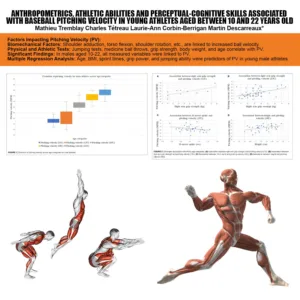 Numerous studies have demonstrated that pitchers do not have to choose between velocity and control. Research often shows that enhancements in muscular strength, joint mobility, and mechanical efficiency—necessary for increased velocity—simultaneously improve a pitcher's control by stabilizing their delivery and release point.
Numerous studies have demonstrated that pitchers do not have to choose between velocity and control. Research often shows that enhancements in muscular strength, joint mobility, and mechanical efficiency—necessary for increased velocity—simultaneously improve a pitcher's control by stabilizing their delivery and release point.
Moreover, anecdotal evidence from professional leagues, where pitchers routinely work at developing both speed and accuracy, supports the notion that these two aspects can be developed in tandem. Many elite pitchers are known for their high velocity and pinpoint control, serving as proof that the right training regimens can overcome the supposed trade-off between speed and accuracy.
Conclusion: The Critical Role of Velocity in Pitching
In conclusion, the myth that velocity compromises control is based more on outdated perceptions than on the current understanding of sports science. With the right approach—focusing on comprehensive physical conditioning, efficient mechanics, and proper mental preparation—pitchers can effectively enhance their velocity while simultaneously improving their control, leading to superior overall performance without an increased risk of injury.
Velocity in Youth Baseball: Building Foundations
Introducing the concepts of velocity in youth baseball is a crucial step towards nurturing skilled, high-performing athletes. When young players begin to understand and apply the mechanics that contribute to increased velocity, they not only improve their pitching speed but also lay a solid foundation for long-term success in baseball.
Importance of Early Education in Mechanics
 Starting with young players, the focus should be on teaching the correct mechanics of pitching. This instruction goes beyond merely throwing the ball hard. It encompasses learning about body positioning, movement sequencing, and proper limb alignment, which are all vital components of effective and safe pitching. When young pitchers are taught these principles early, they are more likely to adopt techniques that prevent injury and enhance performance as they grow.
Starting with young players, the focus should be on teaching the correct mechanics of pitching. This instruction goes beyond merely throwing the ball hard. It encompasses learning about body positioning, movement sequencing, and proper limb alignment, which are all vital components of effective and safe pitching. When young pitchers are taught these principles early, they are more likely to adopt techniques that prevent injury and enhance performance as they grow.
Benefits of Understanding Velocity for Young Pitchers
- Developing Good Habits Early: Learning the right way to pitch from a young age helps children develop habits that will benefit them throughout their baseball careers. Proper mechanics are easier to instill before bad habits become ingrained.
- Injury Prevention: One of the most significant benefits of teaching young pitchers about the mechanics of velocity is the role this knowledge plays in injury prevention. Understanding how to use their bodies efficiently helps young athletes avoid overuse injuries that often occur from incorrect pitching techniques.
- Enhanced Performance: As young pitchers understand and implement mechanical efficiencies, their performance naturally improves. This improvement isn’t just in velocity but also in control and endurance, thanks to more efficient energy use during pitching.
- Long-Term Skill Development: Early focus on mechanics sets the stage for advanced development as players age. As young pitchers mature, the foundational skills they've developed allow them to more easily integrate advanced techniques into their repertoire.
Implementing Velocity Training in Youth Programs
Implementing velocity training for young players should be done carefully and progressively. Coaches and trainers must ensure that training regimens are age-appropriate and focus on overall athleticism and physical development, rather than solely on pitching faster.
- Physical Conditioning: Include exercises that enhance overall athleticism—strength, flexibility, agility, and coordination. These are not only about pitching but about forming a well-rounded athlete.
- Technical Drills: Use drills that reinforce the mechanics of pitching. Drills should be designed to teach players how to coordinate their movements to create a fluid and powerful pitching motion.
- Mental Coaching: Educate young pitchers on the mental aspects of pitching, including focus, handling pressure, and the strategic use of velocity in different game situations.
- Monitoring and Feedback: Provide regular feedback based on observations and possibly even technology-assisted reviews, like video analysis. Feedback helps young pitchers understand what they are doing right and what needs improvement.
Checkout the 3X Pitching Beginner Program
 Ready to elevate your pitching game? Discover the 3X Pitching Beginner Program, designed specifically to help you master the fundamentals of high-velocity pitching. Whether you're just starting out or looking to refine your skills, this program provides the tools and techniques essential for building a strong pitching foundation. Don't miss out on the opportunity to transform your performance on the mound.
Ready to elevate your pitching game? Discover the 3X Pitching Beginner Program, designed specifically to help you master the fundamentals of high-velocity pitching. Whether you're just starting out or looking to refine your skills, this program provides the tools and techniques essential for building a strong pitching foundation. Don't miss out on the opportunity to transform your performance on the mound.
Take the first step towards becoming a powerhouse pitcher. Click here to purchase the 3X Pitching Beginner Program and start your journey to pitching success today! Purchase the 3X Pitching Beginner Program
FAQs: The Critical Role of Velocity in Pitching
1. What age group is the 3X Pitching Beginner Program designed for?
- The 3X Pitching Beginner Program is designed for pitchers of all ages who are new to velocity training or those who wish to revisit foundational techniques. It’s tailored to help both young athletes and older players who are looking to enhance their pitching mechanics.
2. How long does the 3X Pitching Beginner Program take to complete?
- The duration of the program can vary depending on the individual's pace and consistency in training. Typically, players can see significant improvements within a few weeks, but full program completion can take several months of dedicated training.
3. Do I need any special equipment to participate in the program?
- Basic baseball training equipment such as baseballs, pitching mound, and general gym equipment for strength training exercises are recommended to get the most out of the program. Specific details on equipment will be provided within the program materials.
4. Is the program suitable for those recovering from an injury?
- While the program is designed to be low-risk and emphasizes proper mechanics to prevent injury, it is always recommended to consult with a healthcare professional before beginning any new training regimen, especially if recovering from an injury.
5. Can I still benefit from the program if I’ve already started pitching training elsewhere?
- Absolutely! The 3X Pitching Beginner Program is an excellent way to enhance and refine your skills by ensuring that your foundational techniques are solid. It can complement any existing training by reinforcing the essential mechanics and principles of high-velocity pitching.
6. How is this program different from other pitching programs?
- The 3X Pitching Beginner Program stands out due to its comprehensive approach that combines biomechanics, strength training, and mental strategy. It's based on scientifically-backed methods and has been successfully used by many pitchers to improve their velocity and overall pitching performance.
7. What kind of support can I expect while participating in the program?
- Participants in the program can expect detailed guides, video demonstrations, and customer support for any queries related to the program content. Additionally, there are community forums and access to coaching tips via the program platform.
8. What results can I expect from the 3X Pitching Beginner Program?
- By following the program consistently, pitchers can expect improvements in pitching velocity, technique, and overall athletic performance. Results will vary based on individual commitment to the program and baseline skill level.
9. Is there a refund policy if I’m not satisfied with the program?
- Yes, there is a satisfaction guarantee. Details on the refund policy are available on the purchase page, providing assurance that you can try the program with confidence.
For any further questions or to get more details about the program, feel free to reach out through our contact page. We’re here to help you achieve your pitching goals!




